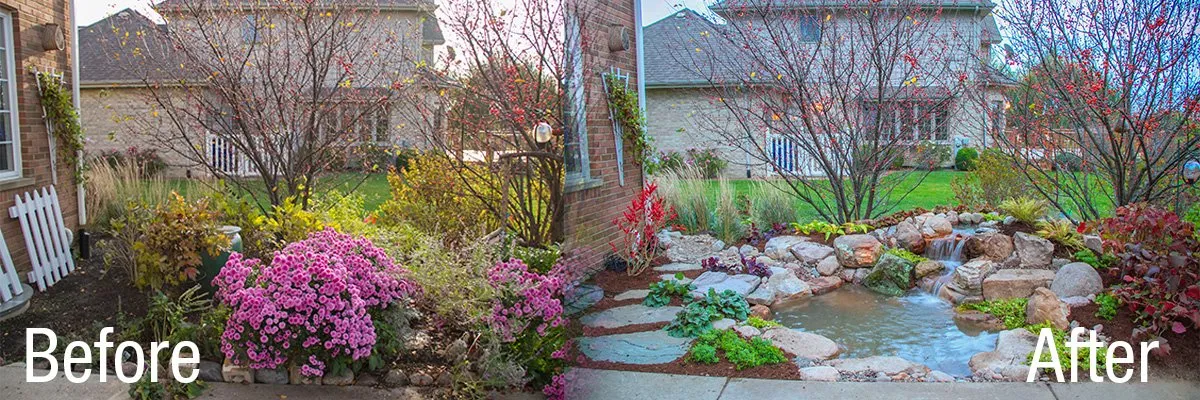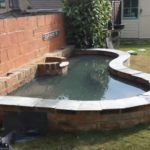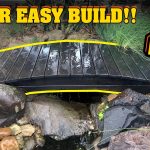Adding a pond water feature to your garden can transform the space into a tranquil and beautiful oasis. Not only does it enhance the aesthetics of your outdoor area, but it also provides a habitat for aquatic plants and wildlife. If you’re considering adding a pond to your garden, here’s a step-by-step guide to help you build a stunning water feature that you can enjoy for years to come.
Step 1: Planning and Design
Before you start digging, it’s essential to plan and design your pond water feature. Consider the size and shape of the pond, as well as its location in your garden. Think about the overall aesthetic you want to achieve and how the pond will fit into the existing landscape. Take into account factors such as sunlight exposure, proximity to trees, and the surrounding vegetation.
When designing your pond, consider incorporating features such as rocks, waterfalls, and aquatic plants to add visual interest and create a natural look. You may also want to include a shallow area for marginal plants and a deeper section for fish, if desired.
Step 2: Choosing the Right Location
Choosing the right location for your pond is crucial to its long-term success. Select an area that receives a good balance of sunlight and shade throughout the day. Avoid placing the pond directly under trees, as falling leaves can cause maintenance issues and potentially pollute the water.
It’s also important to check for any underground utilities or cables before digging to ensure that you won’t encounter any problems during construction. Once you’ve identified the ideal location, mark out the shape and size of the pond using spray paint or a garden hose.

Credit: www.youtube.com
Step 3: Excavation
Excavation is the most labor-intensive part of building a pond water feature. Use a spade or a small excavator to dig out the shape of the pond, making sure to create varying depths to accommodate different types of aquatic plants and provide a habitat for wildlife.
Consider the overall depth of the pond, ensuring that it is deep enough to prevent the water from becoming too warm in the summer and freezing completely in the winter. Aim for a depth of at least 18 to 24 inches in the deepest part of the pond.
Step 4: Installing the Pond Liner
Once the excavation is complete, it’s time to install the pond liner. Choose a high-quality, fish-safe liner that is durable and resistant to punctures. Lay the liner carefully over the excavated area, ensuring that it extends beyond the edges of the pond to allow for securing it in place.
Smooth out any wrinkles or folds in the liner, and use rocks or bricks around the perimeter to hold it in place. Trim off any excess liner, leaving a few inches of overlap to prevent water from seeping out. Be sure to check that the liner is level and that the depth is consistent throughout the pond.
Step 5: Adding a Filtration System
Proper filtration is essential for maintaining the water quality in your pond. There are various types of filtration systems available, including mechanical and biological filters, as well as UV clarifiers. Choose a filtration system that is suitable for the size of your pond and the types of aquatic life you plan to keep.
Position the filtration system near the edge of the pond, making sure it is easily accessible for maintenance. Connect the system to a pump to circulate the water and remove debris and organic matter that can build up over time. A well-maintained filtration system will help keep the water clear and healthy for your pond inhabitants.
Step 6: Adding Rocks and Aquatic Plants
Rocks and aquatic plants play a vital role in creating a natural and visually appealing pond water feature. Arrange rocks around the edges of the pond to create a natural border and provide habitat for beneficial bacteria and small aquatic organisms. Use a variety of sizes and shapes to create interest and texture.
When it comes to aquatic plants, choose a mix of submerged, floating, and marginal plants to provide oxygenation, shelter, and food for wildlife. Water lilies, lotus, water hyacinth, and water lettuce are popular choices for adding color and texture to the pond. Be mindful of the specific growing requirements of each plant, such as sunlight and water depth, and position them accordingly.

Credit: www.aquascapeconstruction.com
Step 7: Adding Fish and Wildlife
If you plan to add fish to your pond, it’s important to acclimate them slowly to their new environment to reduce stress and ensure a smooth transition. Koi and goldfish are popular choices for pond fish, but be sure to research the specific care requirements and stocking levels for the species you choose.
Additionally, consider attracting wildlife to your pond by incorporating features such as bird feeders, bat boxes, and insect hotels. These elements can help create a balanced ecosystem and provide enjoyment as you observe the diverse wildlife that visits your pond.
Step 8: Maintenance and Care
Once your pond water feature is in place, regular maintenance is essential to keep it healthy and thriving. Remove debris such as leaves and twigs regularly, and check the filtration system to ensure it is functioning properly. Monitor water quality parameters such as pH, ammonia, and nitrate levels to ensure a balanced ecosystem.
During the winter, consider using a pond heater or aerator to prevent the water from freezing completely, which can be harmful to fish and other pond inhabitants. In the warmer months, be vigilant for signs of algae growth and adjust the filtration and aeration as needed to maintain water clarity.
Step 9: Enjoying Your Pond Water Feature
With proper planning, design, and maintenance, your pond water feature will become a focal point of your garden, providing a serene and natural setting for relaxation and enjoyment. Whether you’re watching fish gracefully swim through the water, listening to the soothing sound of a waterfall, or observing wildlife that visits the pond, your water feature will bring joy and tranquility to your outdoor space for years to come.
By following these steps and incorporating your own creativity and personal touches, you can create a pond water feature that reflects your individual style and enhances the beauty of your garden.
Building a pond water feature is a rewarding project that allows you to connect with nature and create a peaceful retreat in your own backyard. With careful planning and attention to detail, you can build a pond that brings beauty, tranquility, and a thriving ecosystem to your outdoor environment.
— This comprehensive guide provides step-by-step instructions for building a pond water feature in your garden. From planning and design to maintenance and care, this resource covers everything you need to know to create a stunning water feature that will enhance the beauty and tranquility of your outdoor space.



